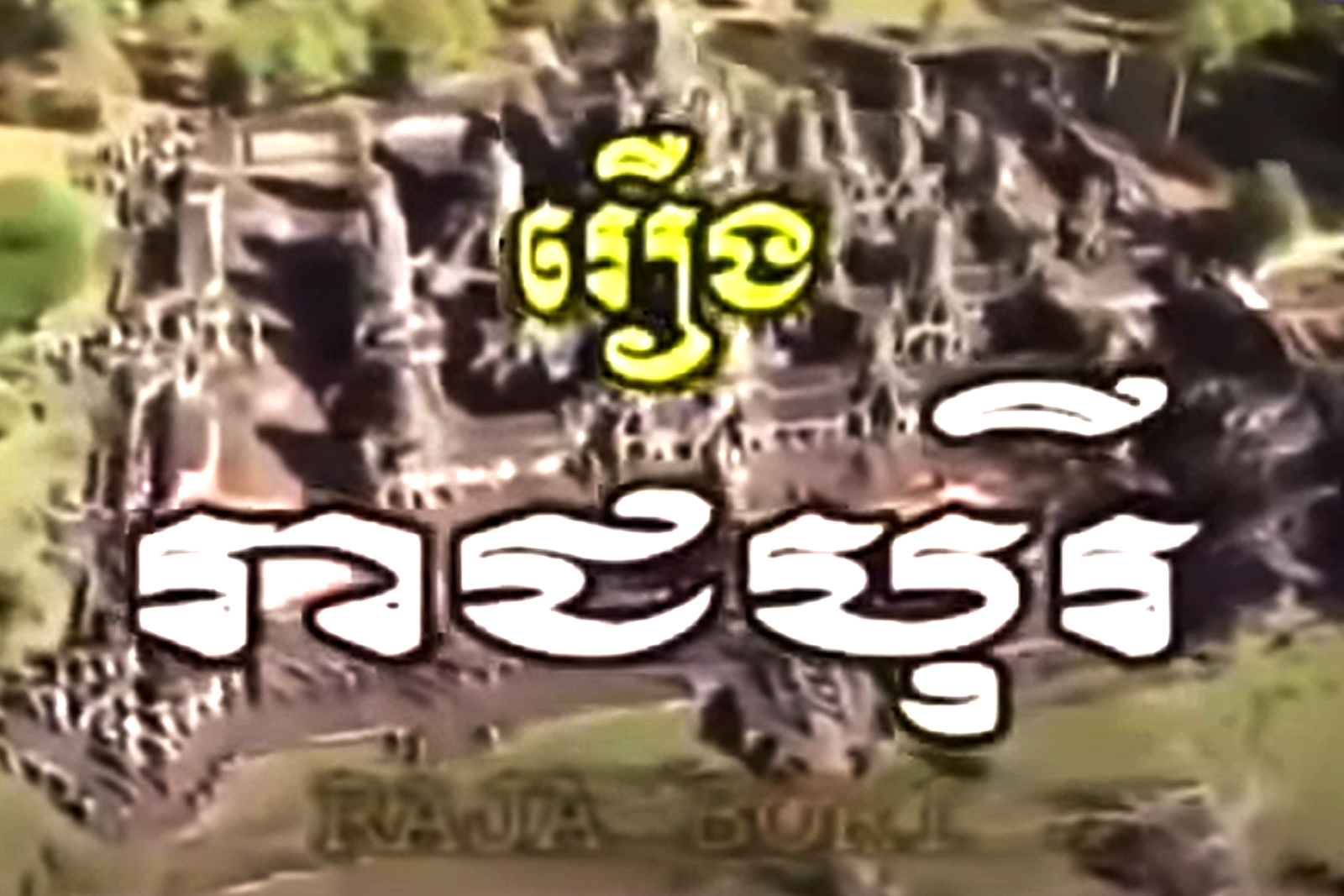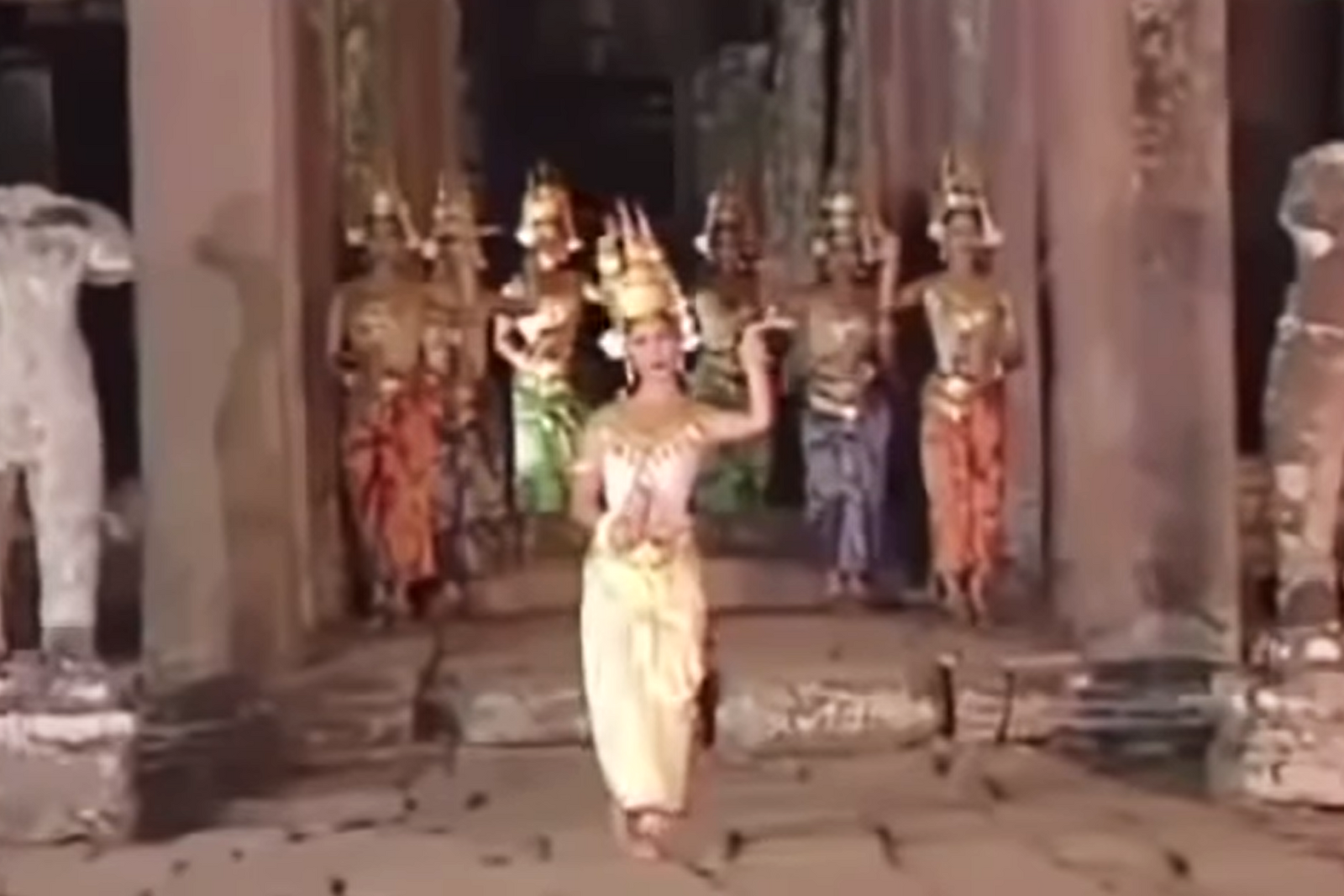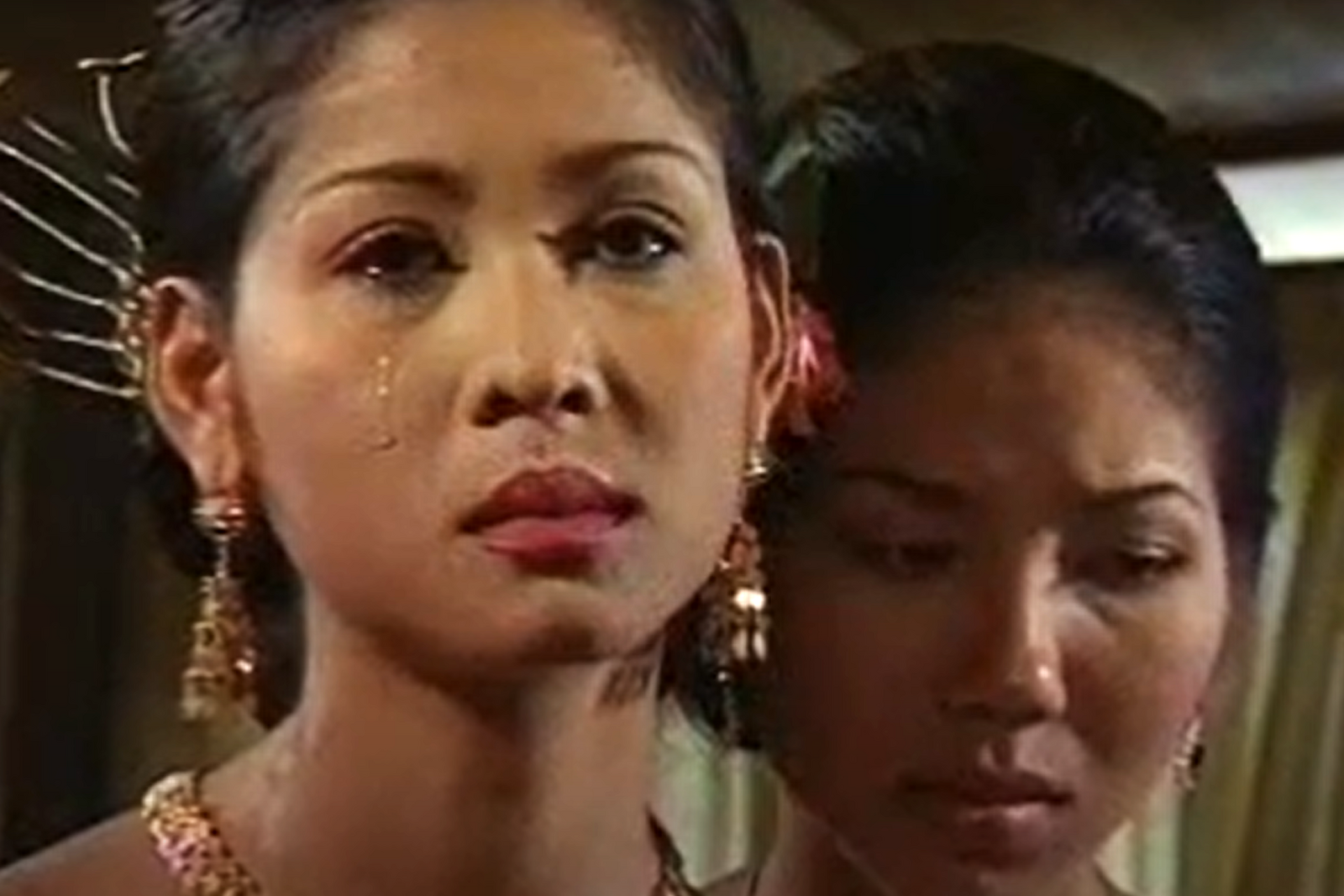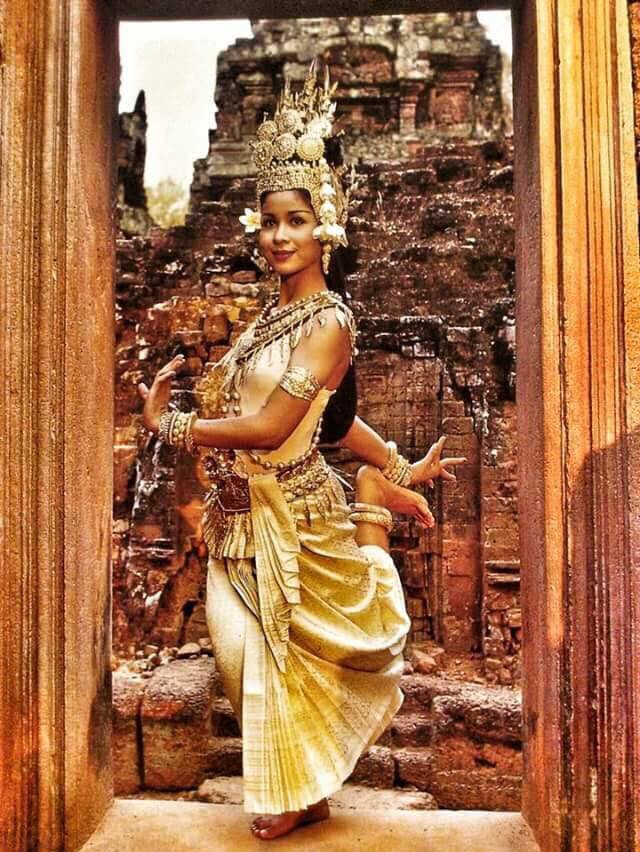Raja Bori រាជបូរី (2002)
A lesser-known feature movie dealing with serious matters - art looting, perpetuation of art traditions - at the start of Cambodia's "Second Kingdom" period.
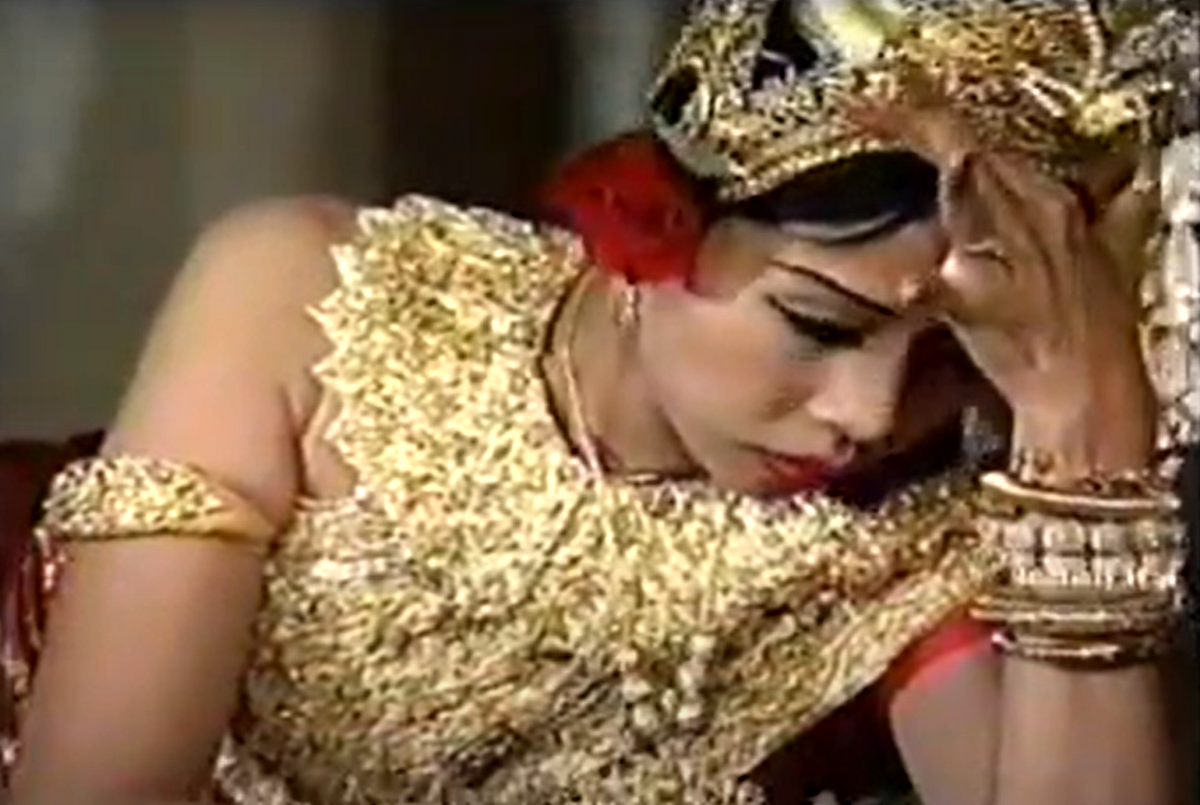
Published: 2002
Source: posted by SarunSmotKhmer.
Language : Khmer
រាជបូរី reach borey Royal City movie starts in 12th century Angkor [black-and-white 4 min sequence, followed by aerial view of Angkor Wat in color, as well as all following scenes], when a young sculptor, Samnang [សំណាង means “fortune, fate” in Khmer], is busy sculpting apsaras on a wall. Young Phalla [ផល means “fruit”, “benefit” in Khmer] comes over to bring him water, and remarks that “preserving our culture and traditions and safeguarding these temples are is an important task for every Cambodia, adding: “The apsaras dance for the King, and the King asks the Boddhisvattas to give peace to Borei Angkor” (Cambodia).
Nine centuries later, two kids, boy and girl, play hide-and-seek in Angkor Wat, among groups of foreign tourists. In Ta Prohm, the boy, Samnang, begs a professional sculptor to take him as a his pupil. Meanwhile, the girl, Phalla attends with other kids an Apsara dance at Angkor Wat. Afterward, she tells the main dancer she’s dreaming of learning the art with her. She joins the main dance school — apparently the Minister of Fine Arts school in Phnom Penh, where in real life Ouk Phalla was a renowned teacher -, where an older ballet mistress exhorts them to perpetuate the art form created by Queen Kossamak.
15 years later, she dances [beautifully] in front of the Bayon [The main dance scene has been uploaded online as a clip by Ichan90a], and Samnang is seated among the guests. He is now a professional guide, and explains Ta Prohm’s layout to foreign tourists, alluding in passing to the restitution of Prasat Preah Vihear to Cambodia in 1962. Commenting on the apsaras on reliefs — and reminiscing Phalla’s superb performance -, he lauds “the subtle elegance of Khmer women”, then shows them the Bayon, “the only Angkorian temple dedicated to Buddhism.”
Phalla is visiting her mother Phally and family from Phnom Penh. She’s a weaver in a village close to Angkor [Phum Sra Srang?]. As they join the Khmer New Year celebrations near Angkor Wat, Phalla and Samnang lock eyes while joining the traditional games. In the evening, he shyly invites her to join the New Year dances, and she accepts. The morning after, they take a walk together, Samnang reveals to her that he saw her dancing at Bayon, and she allows that she recognized in him the boy she used to play with. They stroll the galleries of Angkor Wat, “where art seems alive”, remarks Samnang, adding in a sad tone” Now the temple has deteriorated. Many of its sculptures have been illegaly trafficked to foreign countries.” Later, they seat by the river at Kbal Spean, walk up the Phnom Kulen. In Prasat Bakheng, an old hermit reads Samnang’s palm and foresees a dark future.
Phalla’s aunt comes to the house to introduce Sophea to Phalla’s mother. He, too, has seen her at Bayon and wants to marry her, but Phalla retires without a word. Later, she tells her mother that she wants to complete her studies, that she has no lover and only “loves the Arts.” She goes to Ta Prohm to reveal Samnang “something important”, but he delivers a lecture in Khmer history. In the background, we see two older men plotting some looting in the temple. Samnang has noticed them, and when they act on their nefarious projects at night (torch lights, ominous music) he tries to stop them and gets killed.
Seeing Phalla’s sorrow, her mother allows that she knew about her sentiments for the unfortunate Samnang, but convinces her to marry Sophea. As the brides is getting ready for the wedding, she soflty cries. As the wedding ceremony goes on, one looter is arrested by villagers in the forest, with one Buddha head hidden in a stack of hay on an oxcart. The wedding ceremony ends abruptly when an accomplice rushes into the room and warns Sophea, the looting ring’s boss, that they’re “in trouble.” Distraught, Phalla goes to Banteay Srei, while we hear the poignant song ទំនួញ អប្សារា Tomnuonh Apsara, Sorrowful Apsara, composed by Chea Chanboribo and sung by Touch Sreynich. The movie ends when Phalla, picking a pink lotus flower from the water, feels a presence behind her and calls out: “Samnang?”
About the movie
Prince Ranariddh had been First Prime Minister of Cambodia with PM Hun Sen from 1993 to 1997 when clashes between rival parties forced him into exile (in Malaysia) from June 1997 to March 1998. At his return, he became President of the National Assembly from November 1998 until March 2006, and was considered as the likely successor to King Sihanouk, his father, until he officially renounced his interest in the succession in 2001.
In this politically charged context, Prince Ranariddh wanted to tell the story of modern Cambodia, it links to the Angkorian civilization, and decided to dab into filmic expression, well-aware that he would never compete with his father, a seasoned filmmaker credited with some 20 substantial feature movies. This is “the work of an amateur,” he was to comment when Rajabori was released in 2002, “first to be shown to district governors and commune chiefs, then to university students,” according to Noranarith Anandayath, assistant producer and then the prince’s personal secretary — with a spectacular fall out in 2014.
Described as “an essentially educational film,” the love story of childhood friends separated by their individual love for Khmer culture, the movie feels a lot more than that twenty years later, firstly because it tackled an issue that has come in the forefront only in the last decade (2020s): the looting of ancient Khmer artefacts in Cambodia’s temples. Samnang (played by actor Chea Samnang) initiates foreign tourists to the traditions and history of Angkor, and will lose his life attempting to prevent a looting; his promised one, Phalla (played by Ouk Phalla), masters the time-honored art of Robam Tep Apsara and is almost married, against her wish, to the local chief looter; the ideal love story is broken by occult forces, ending in tragedy.
Fictional and real tragedies
The tone of the movie is elegiac, never plaintive, music and choreography are remarkable — including songs by the King-Father himself -, and the two main characters, who were debuting on screen, are compelling. There is a tragic aura around the work, later materialized in the fate of two important participants in the movie:
- Princess Ouk Phallaអ៊ុក ផល្លា (27 Jan 1979 — 2018) had married Prince Norodom Ranariddh នរោត្តម រណឫទ្ធិ (1944−2021) in 2010, and was severely wounded along him in a car accident occurred on the Phnom Penh-Sihanoukville road on 17 July 2018, dying a few days later. She had been a stellar dancer with the Royal Ballet of Cambodia, under the training of Princess Norodom Buppha Devi, and taught classical dance in the 1990s. She was the granddaughter of Sisowath Sodasi Monivong (a daughter of King Monivong and Princess Sisowath Sisoda) and Sisowath Watchhayavong (1891−1972), president of the Council of ministers (1947−8). It was during the shooting of Rajabori that the Apsara dancer and director Norodom Ranariddh met, at a time the latter was still married to Princess Norodom Marie. A bitter controversy broke out in 2006, with opposing political parties called for the urgent implementation of an “adultery law”, while the King Father, protective of his son Ranariddh and a liberal society, commendited a satirical short movie, Who hasn’t a Mistress?.
- The poignant song Tum-Nuohn Apsara [Sorrowful Apsara, written by Noranarith Anandayath] was sung by Touch Sreynich ទូច ស៊ុននិច, a popular singer in Cambodia, who barely survived an attempted assassination in October 2003, a brutal attack unsolved to this day. After a long recover, Touch Sreynich (also known as Touch Sunnix) moved two years later to Sacramento, USA, and then to Long Beach, also in California.
- In 2017, producer Hour Sophal intended to start the shooting of Reach Borey [Rajabori] Comeback, with entertainers Ratanak Piseth and Jessica as main characters Samnang and Phalla. The project was met with disapproval by the relatives of the then director and female star, especially after actress Jessica had said “Reach Borey’s spirit” had come to visit her.
Credits (in KH/ENG)
Direction, music selection and production: Norodom Ranariddh | Assistant Director: Hang Vannara | Cameramen: Long Sopheap, Sin Rottana | Starring: Ouk Phalla, Chea Samnang, Sophea David, Doeur Tarasi | Songs by HM King Norodom Sihanouk: Complainte/Ironie/Regret | Music and Words by Sin Sisamouth: The Sad Fragrance of Flowers | Music written and arranged by Chea Chanboribo: Sorrowful Apsara ទំនួញអប្សារា | Technical photography directed by Teng Dy (Golden CD production) | Editing by Meas Borrathany, Hang Vannara, Teng Dy | Sound by Che Chanboribo, Khuon Rith | Assistant Producer: Noranarith Anandayath.
Tags: dance, dancers, movies, King Sihanouk, Cambodian cinema, Prince Norodom Ranariddh, 2000s, looted art

